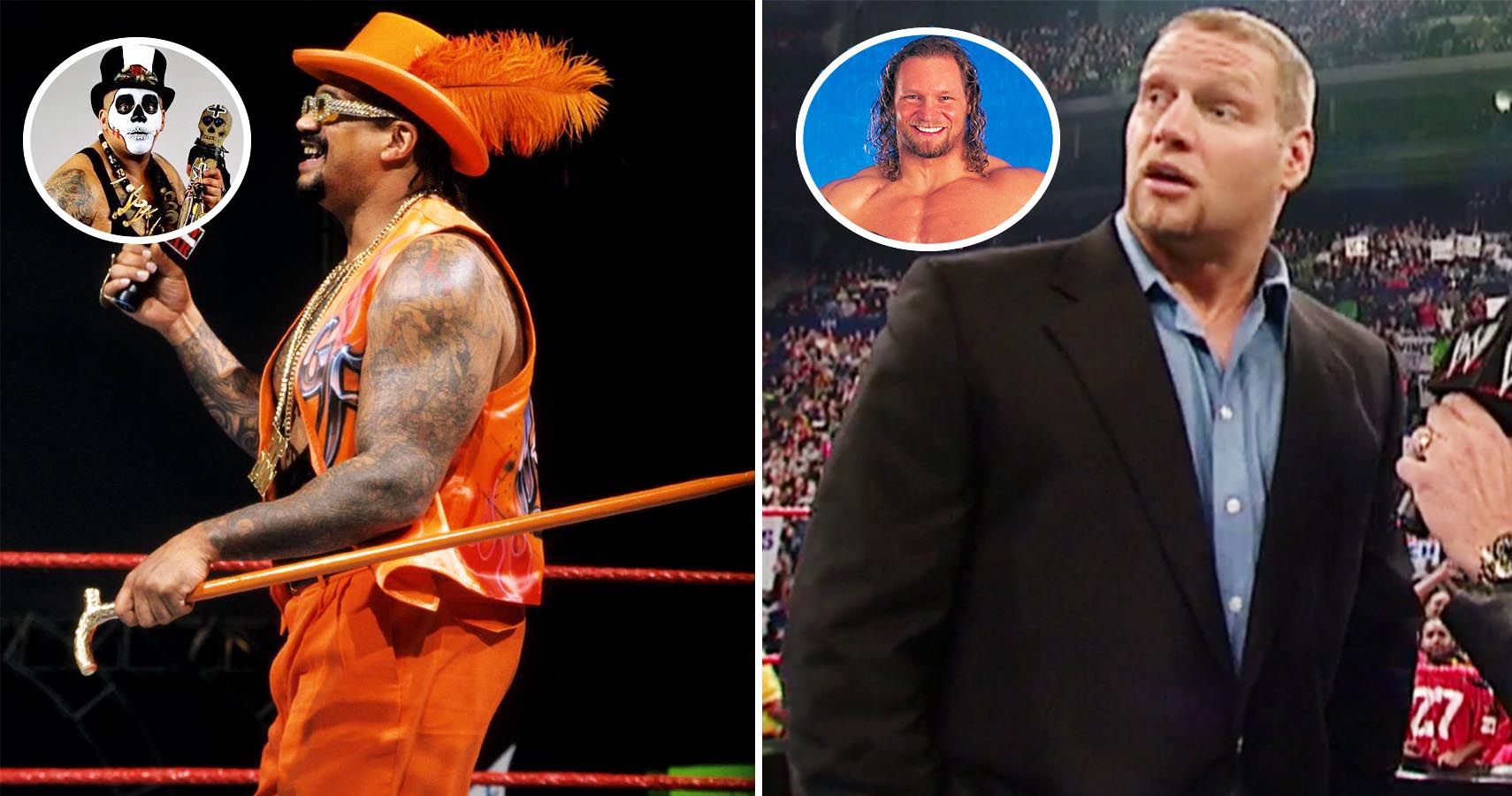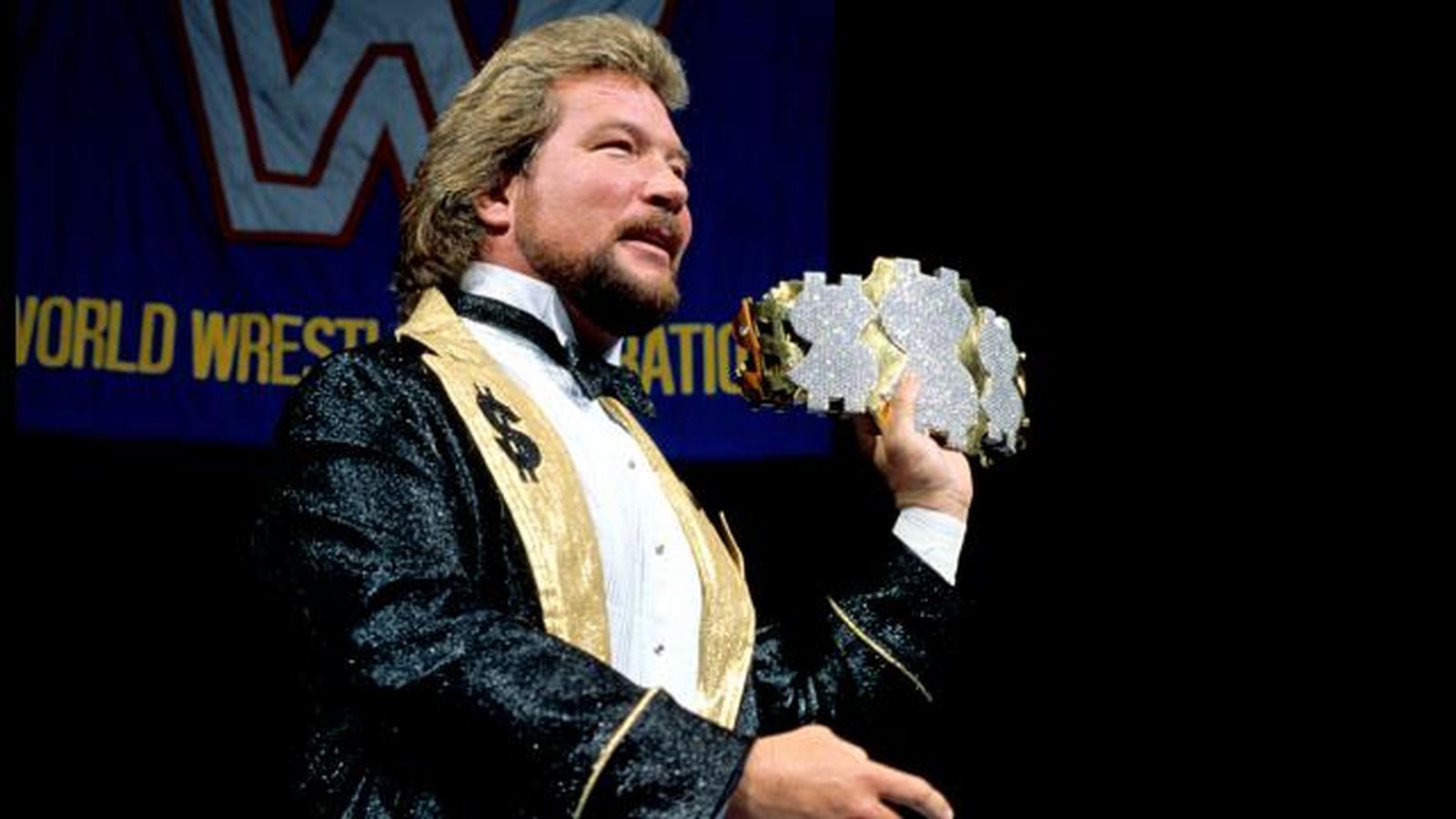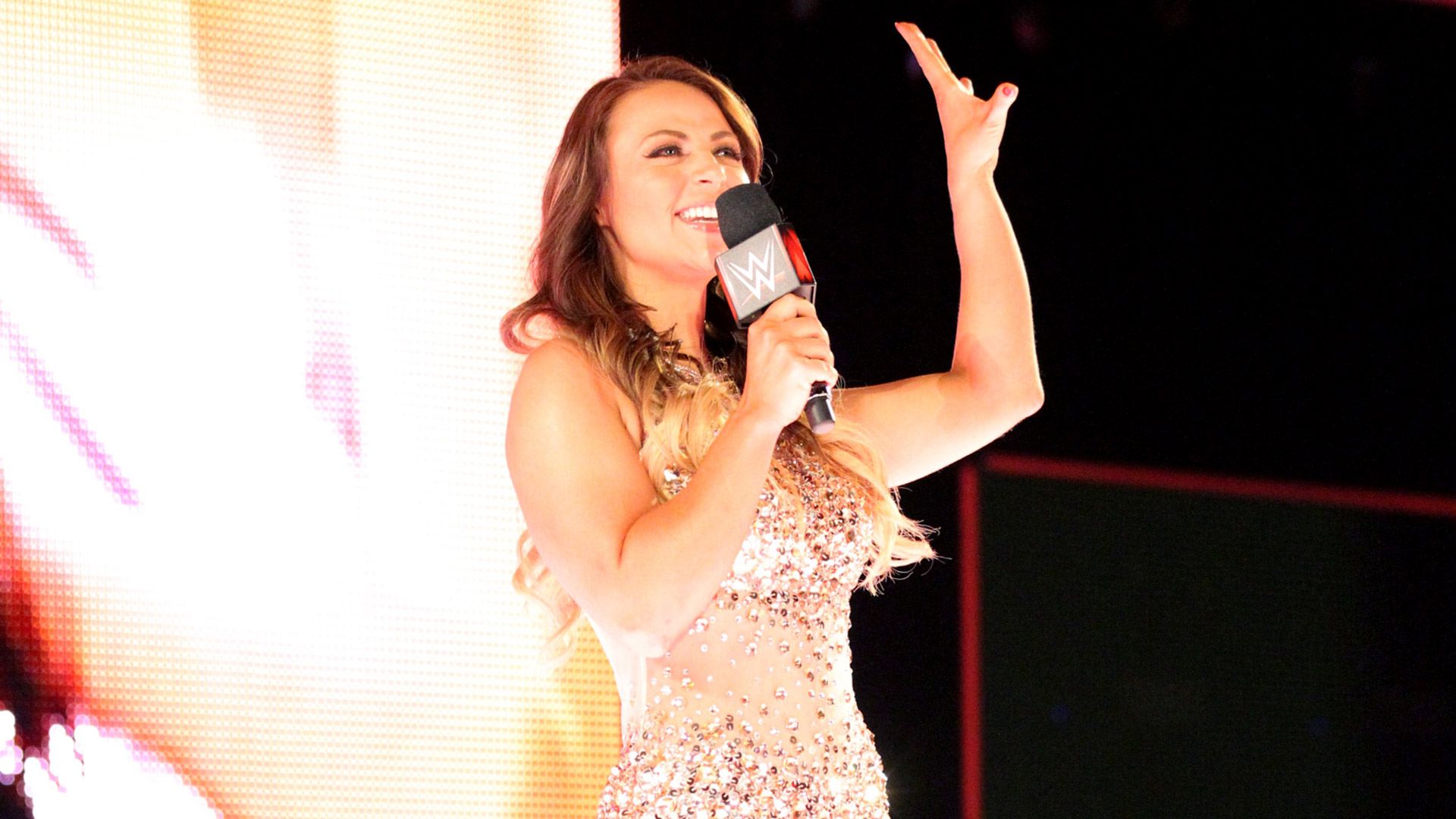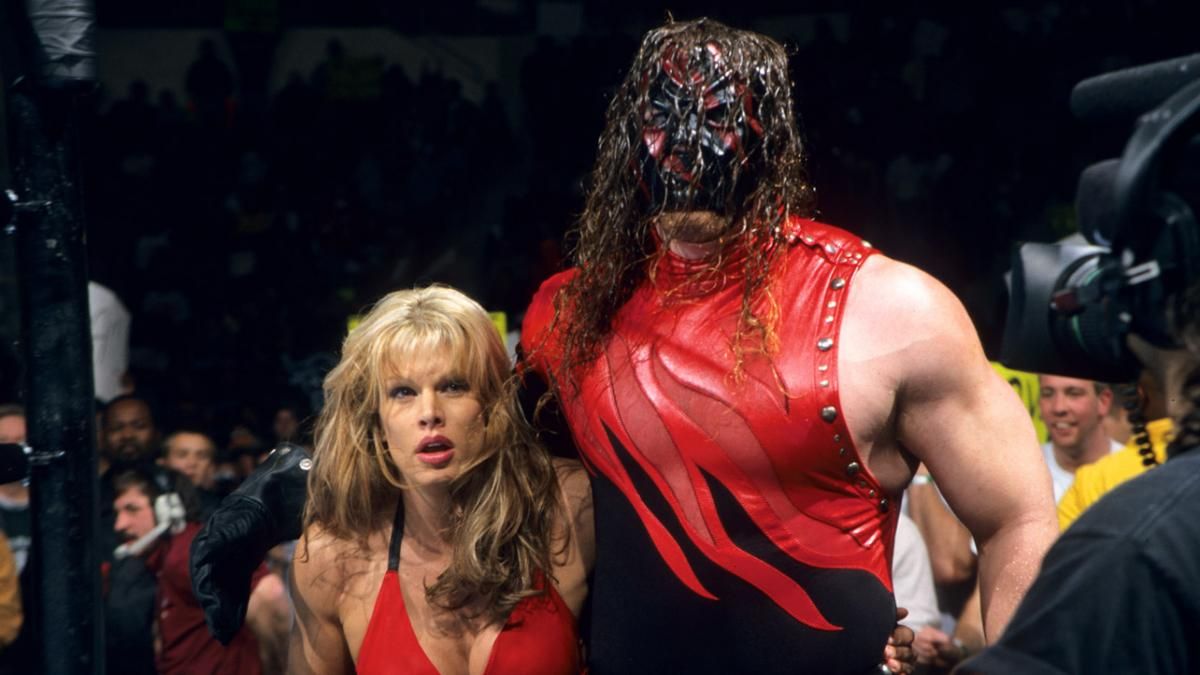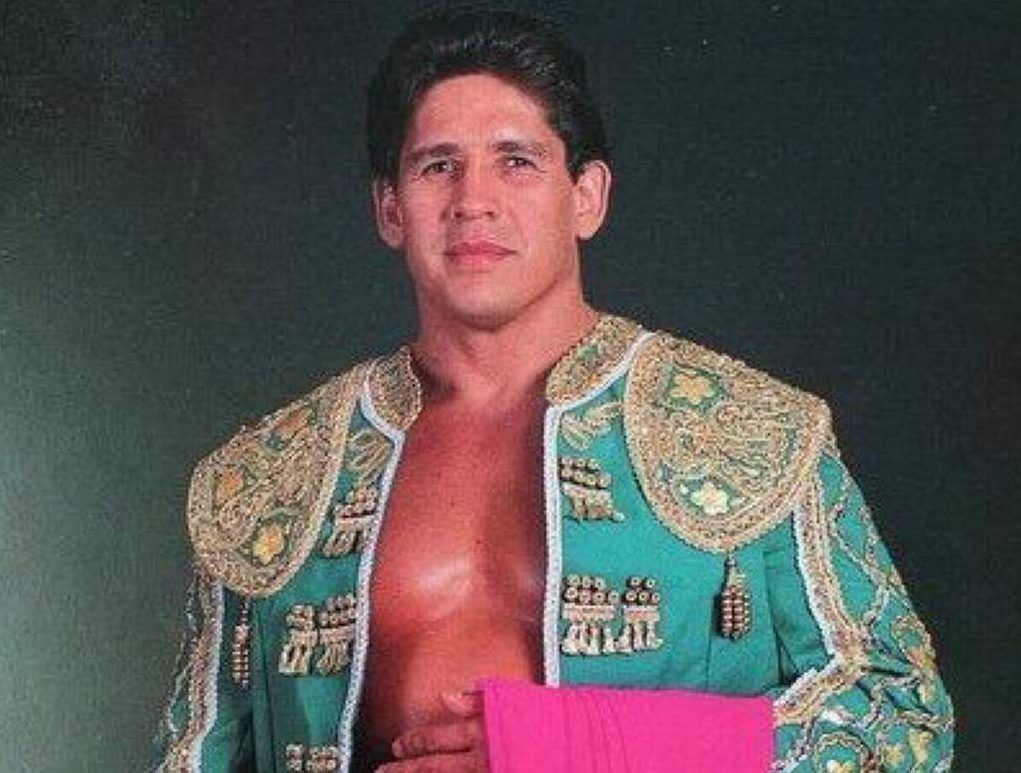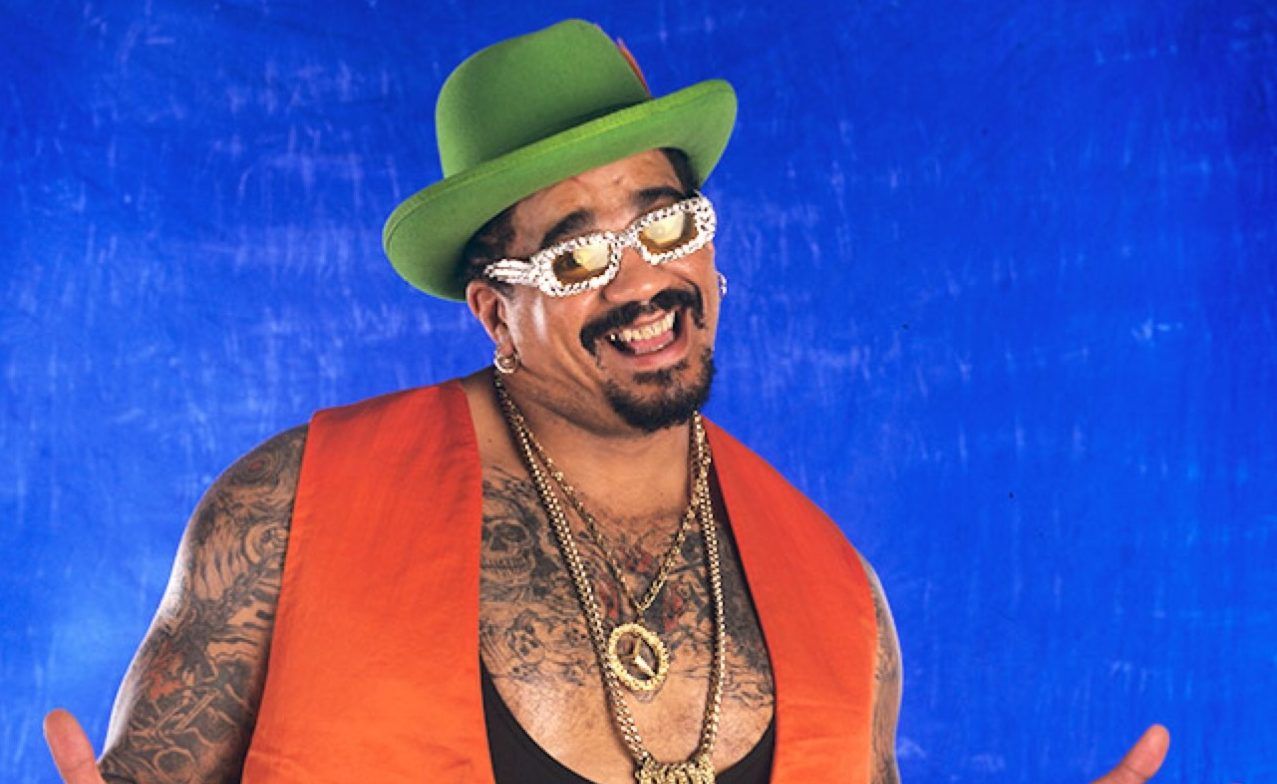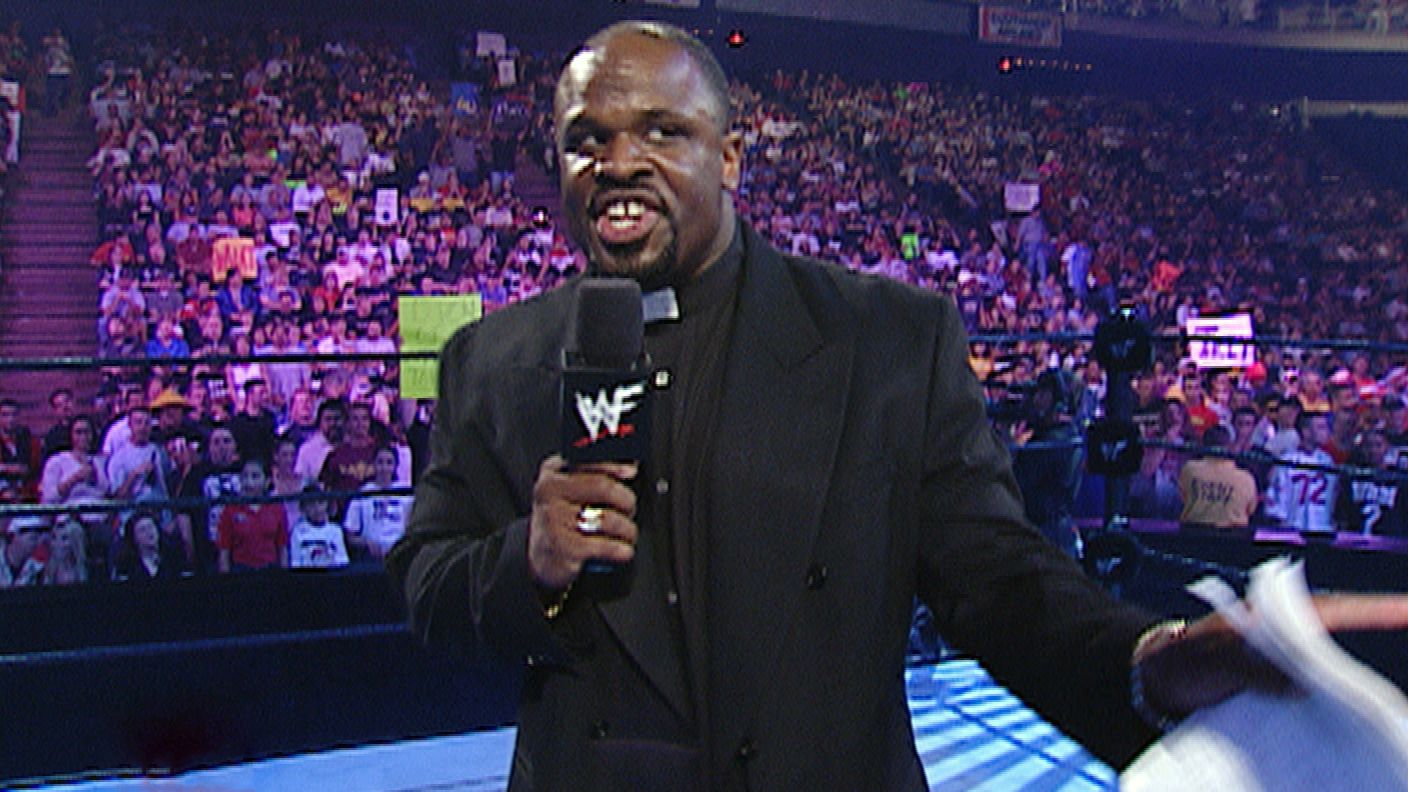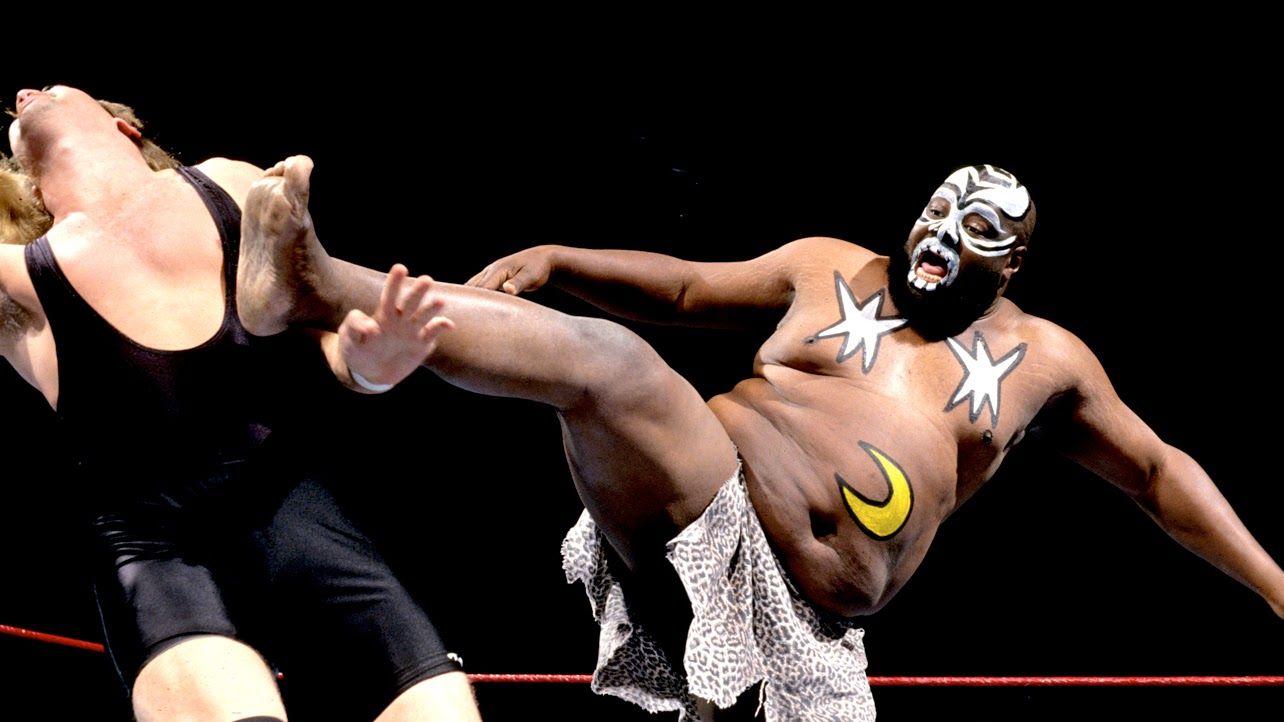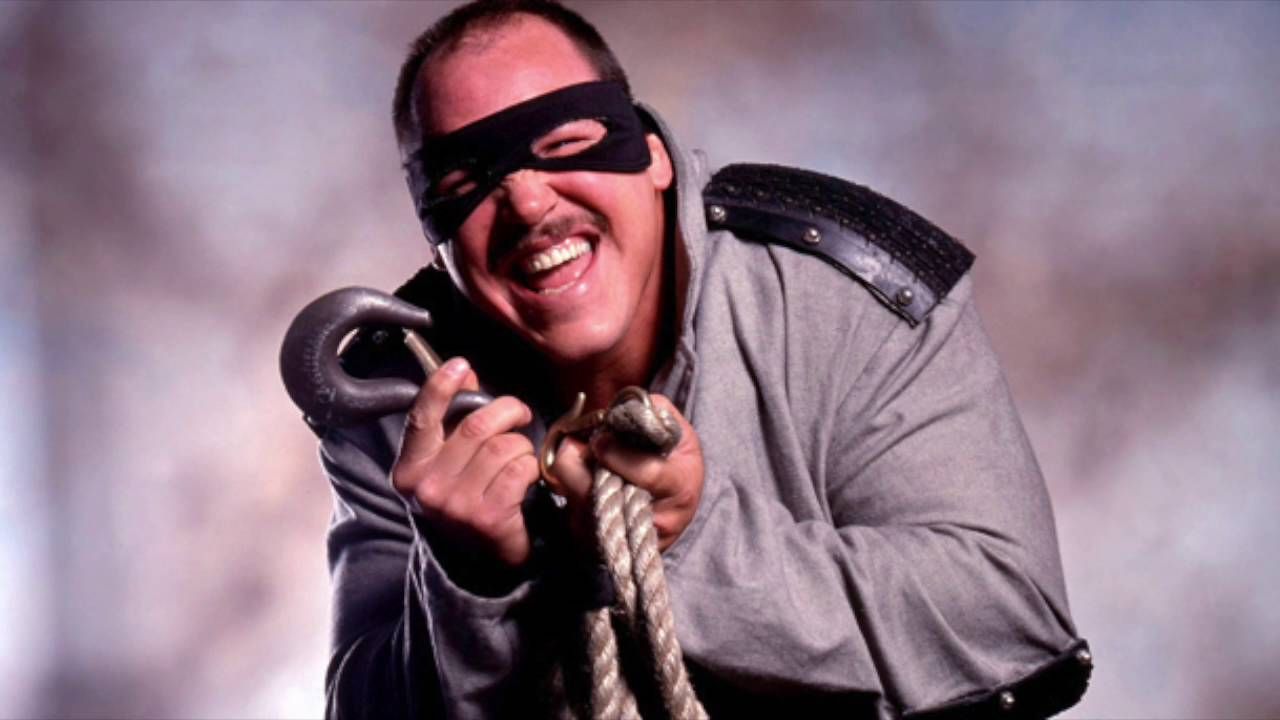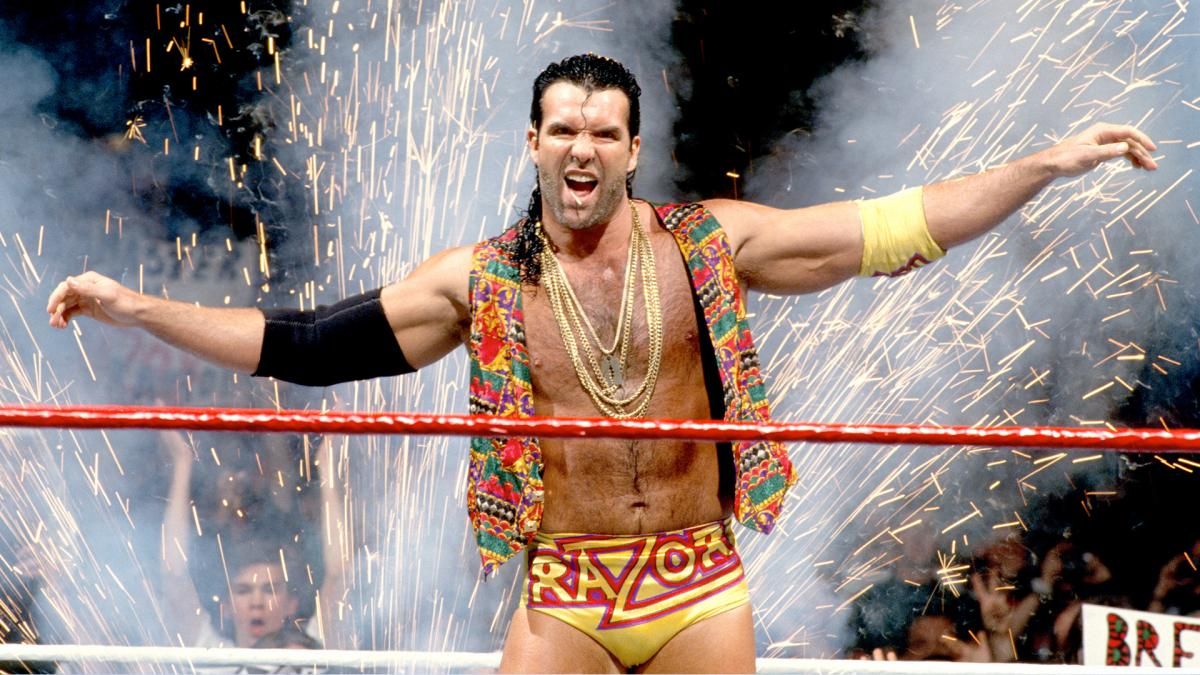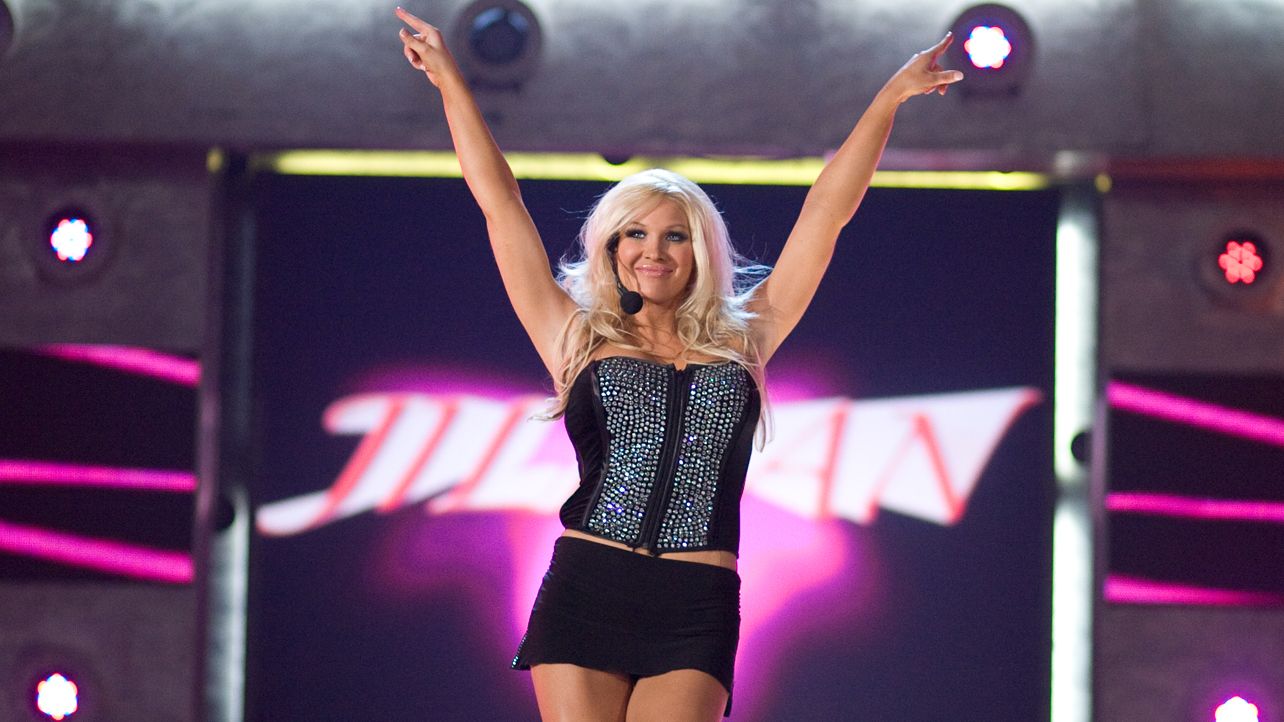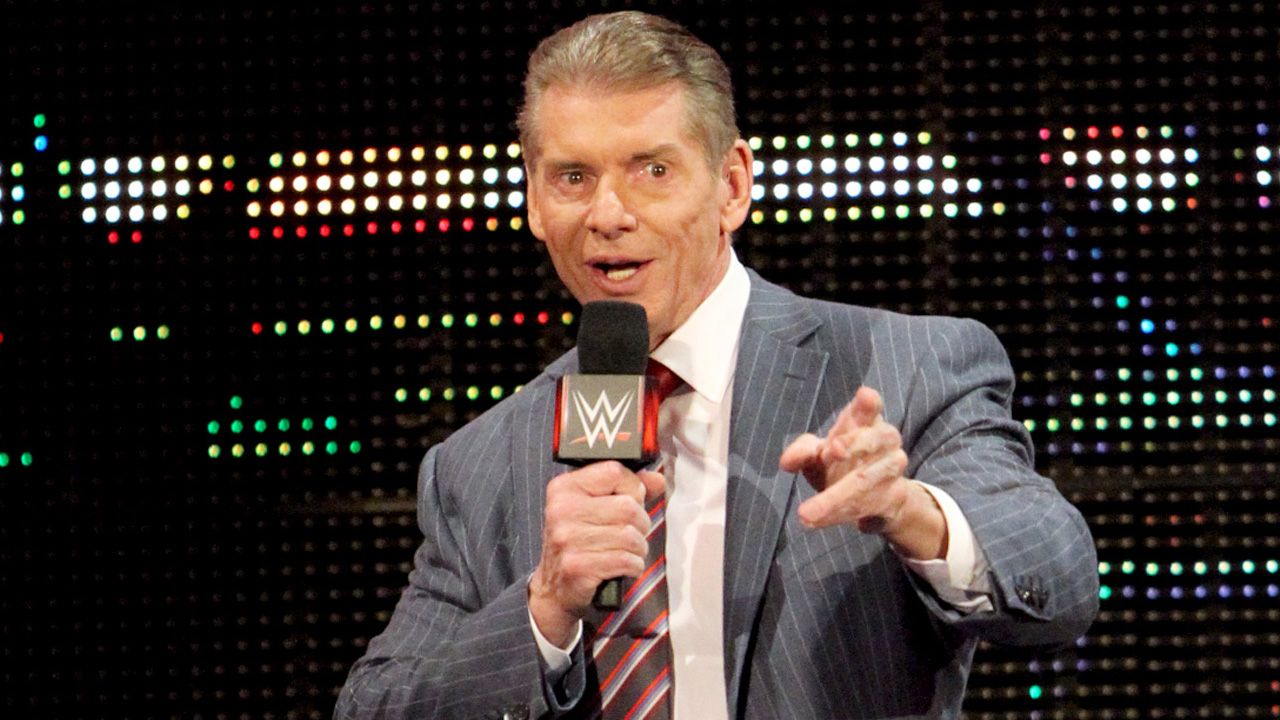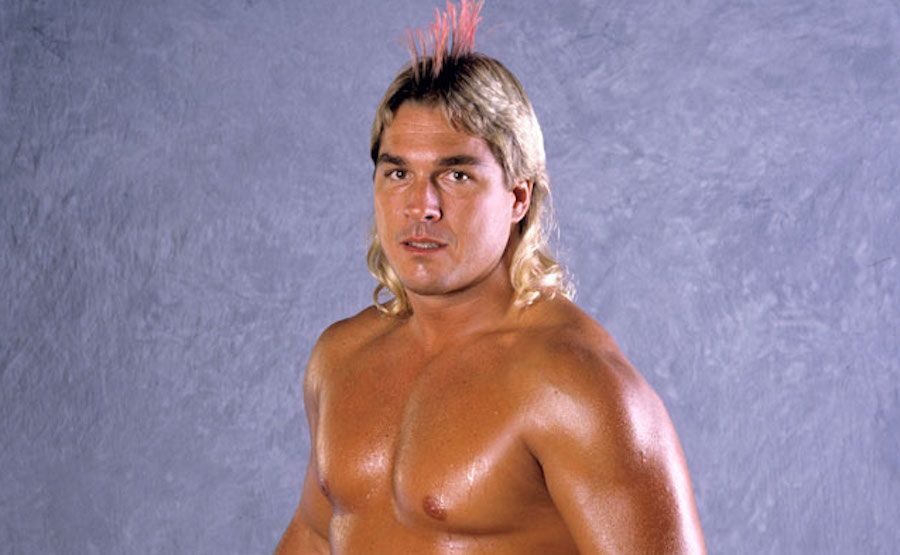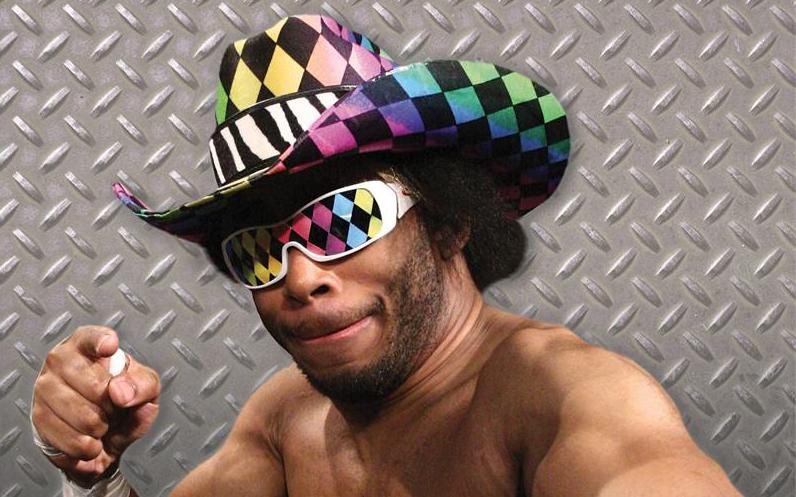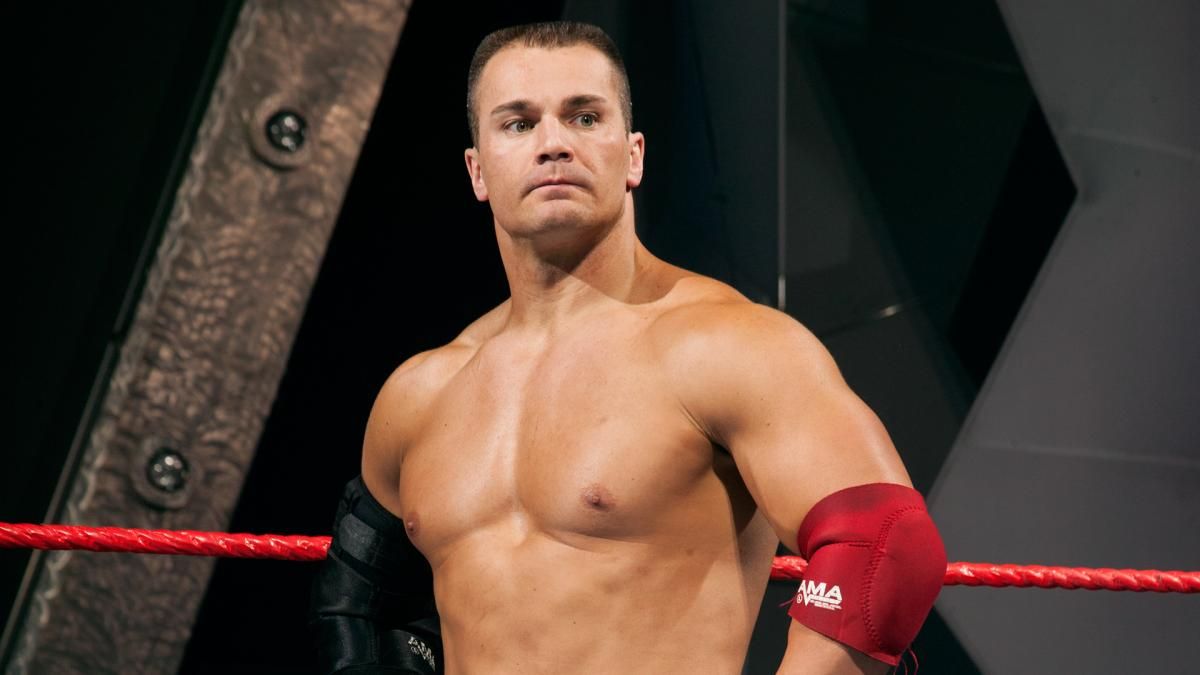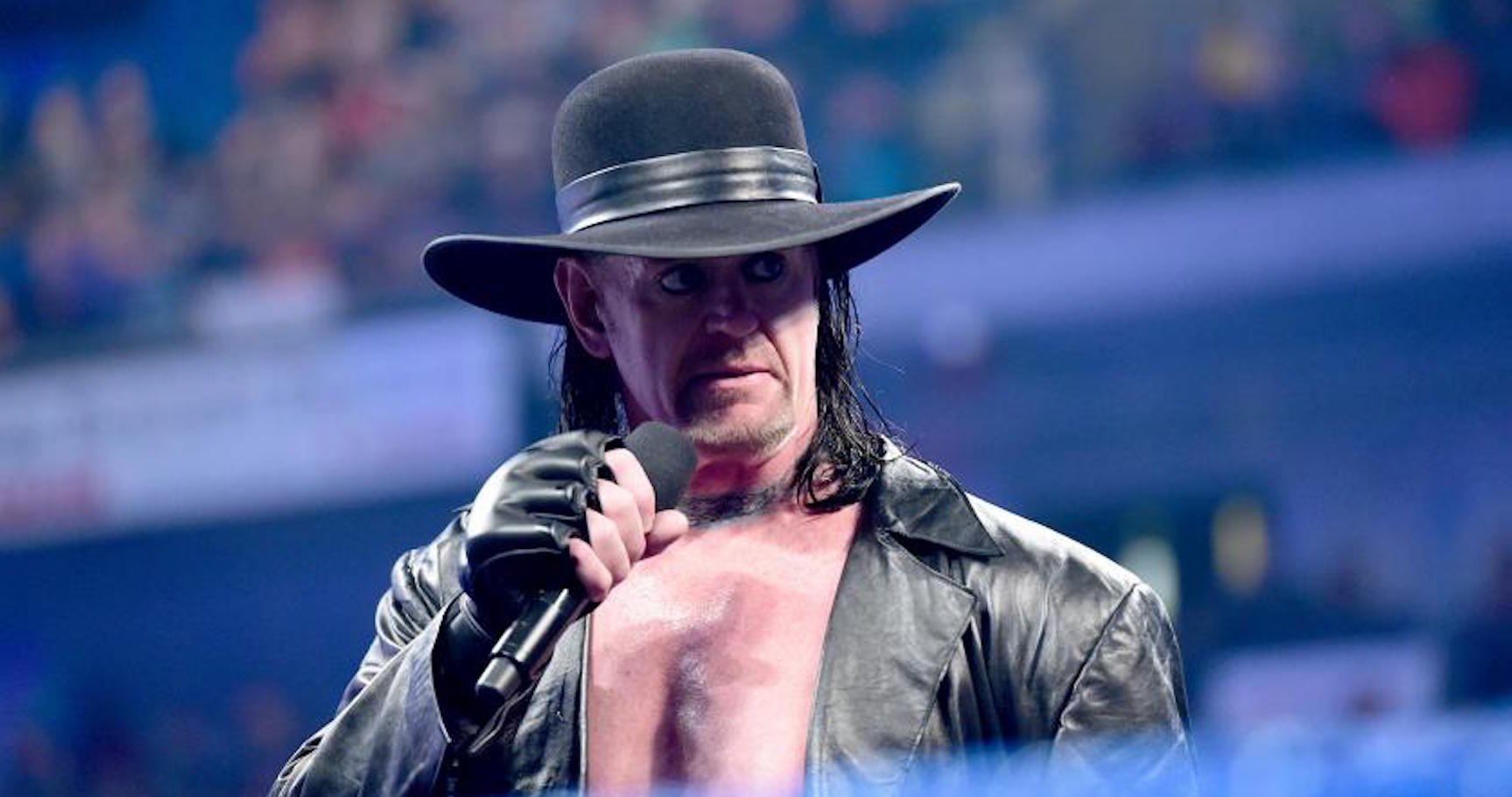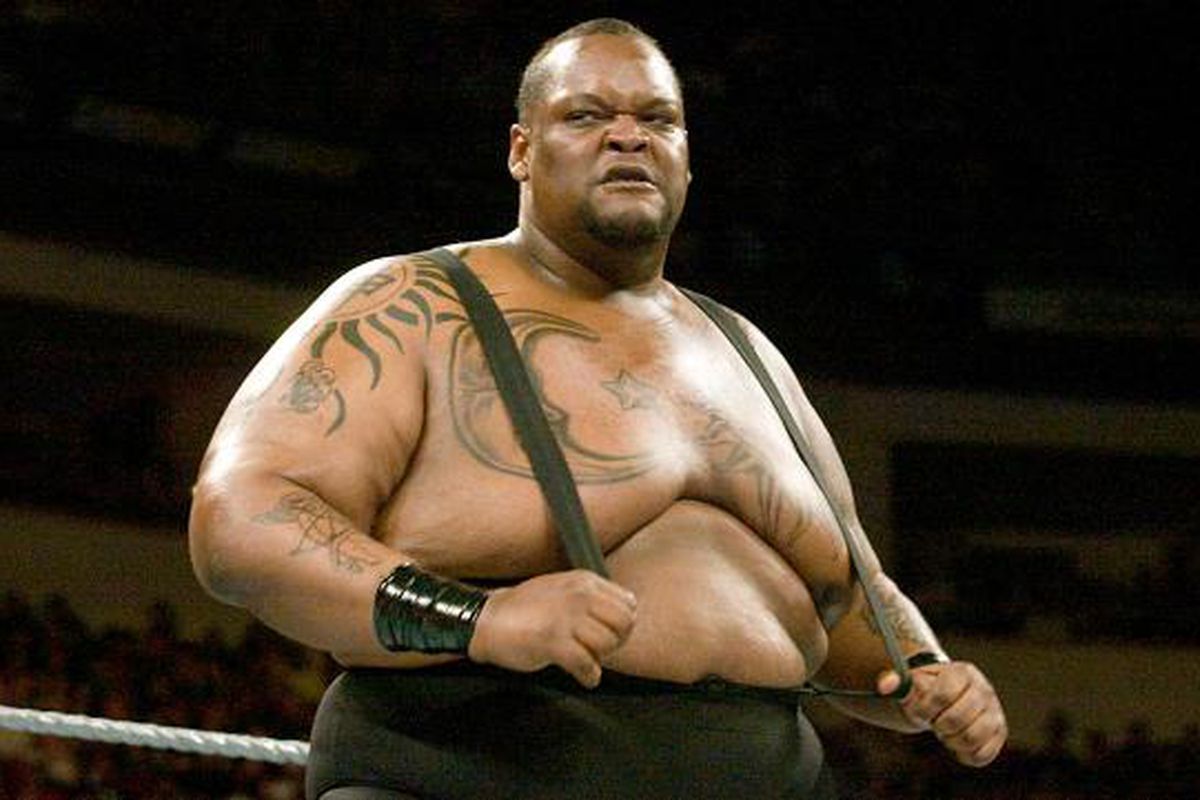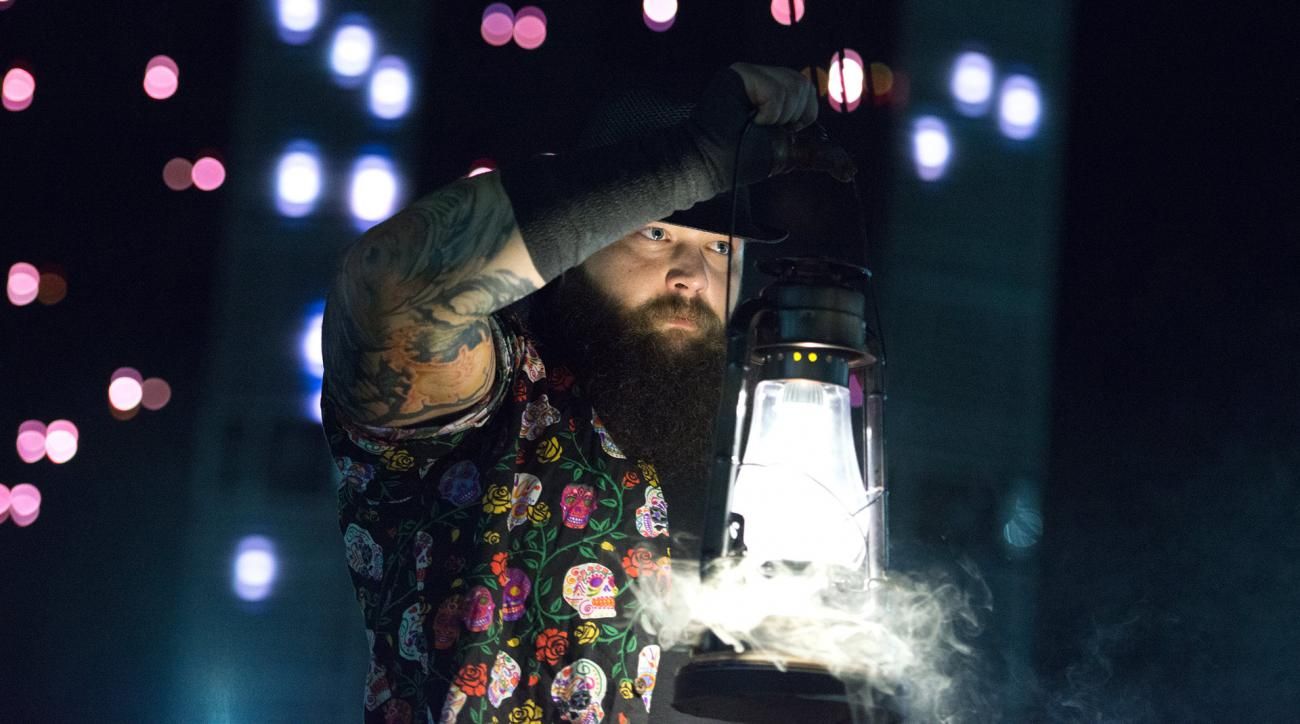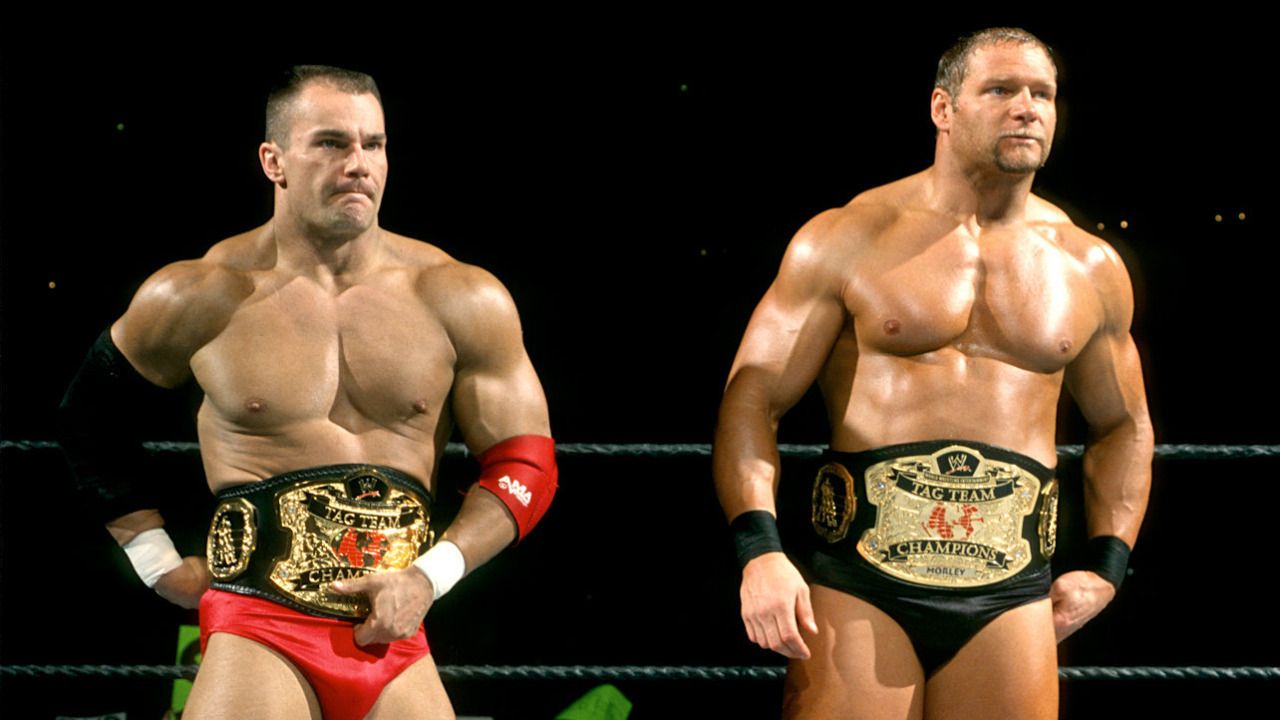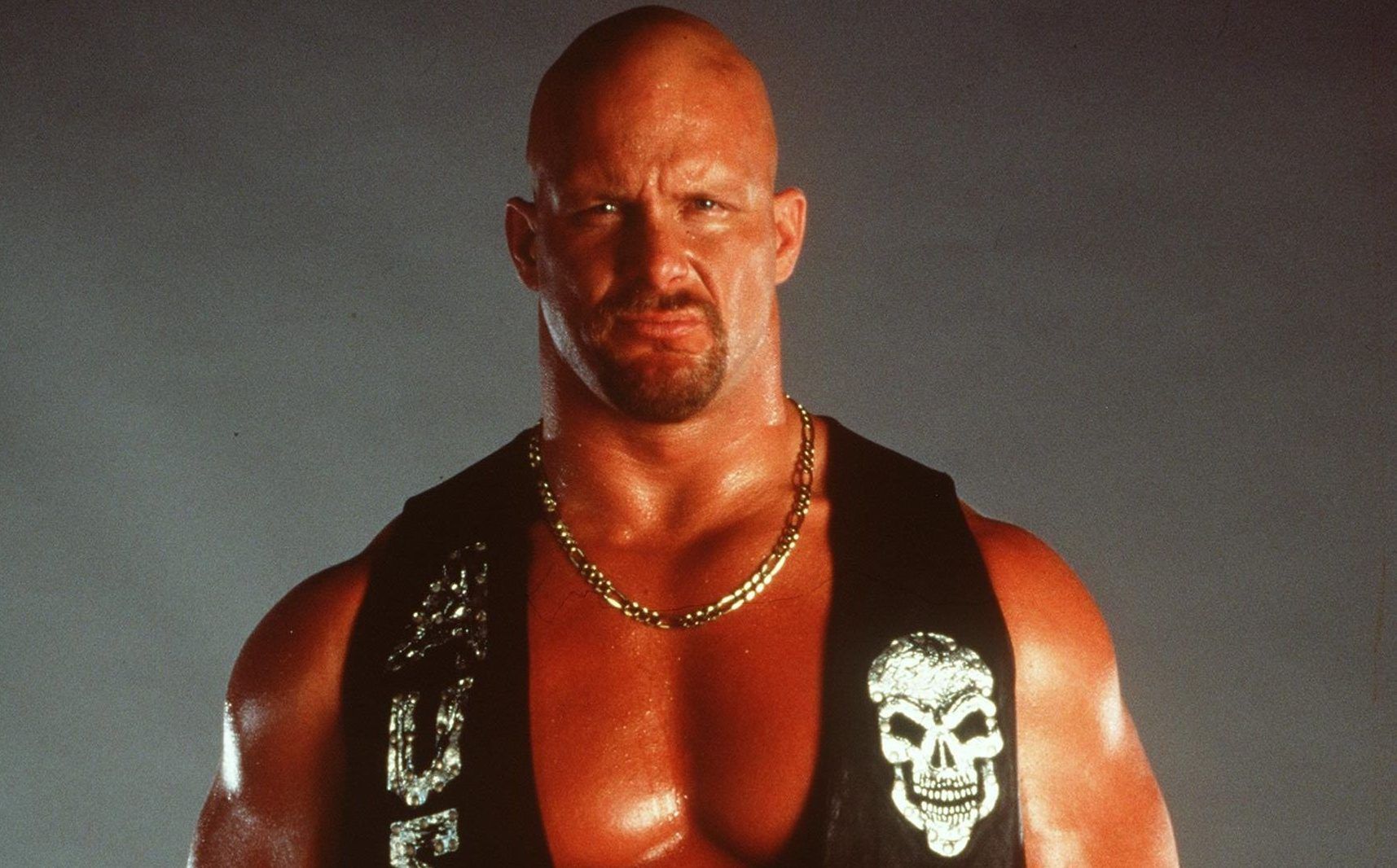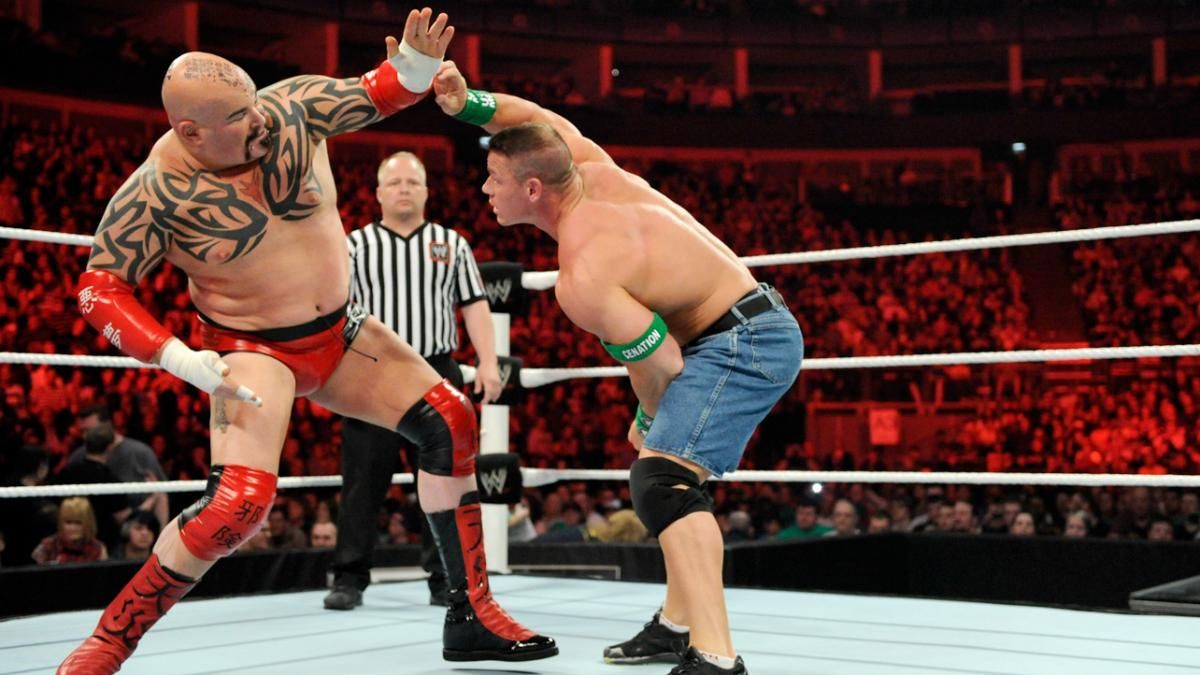There are quite a few factors that go into the success of a professional wrestler. Sure, there are the obvious elements like a performer’s physical talents including athleticism, technical ability, and skill at wrestling fundamentals. On top of that, there are pieces like talking ability and charisma that speak more to entertainment than athleticism, but are undeniably vital components of a successful pro wrestler’s repertoire. Timing is also key—Stone Cold Steve Austin might have been in the villain seventies or eighties, but caught fire as a rebellious anti hero in the late nineties. Conversely, Hulk Hogan’s patriotic babyface act was custom made to thrive in the '80s, but would probably be balked at as cheesy today.
And so we arrive at the matter of gimmick—a wrestler’s persona and character. Sometimes it’s a natural extension of a wrestler’s real life personality, and sometimes it’s the cultivation of a very different fictional identity that the wrestler espouses.
Not all gimmicks are created equally, nor is every wrestler and his or her gimmick a perfect match. Sometimes a gimmick change can make someone’s career, by allowing a performer to highlight key talents and personality traits. Other times, the wrong gimmick can tank someone’s career for feeling like an awkward fit or having a ceiling on it that the wrestler can never quite overcome.
This article takes a look back through wrestling history at a variety of wrestlers who changed their gimmicks at different stages. Ten of these changes went a long way toward making someone’s career. Ten backfired and did the wrestler in question no favors.
20 20. Thrived: Ted DiBiase
Ted DiBiase is best remembered to fans around the world for his “Million Dollar Man” gimmick, but some fans don’t realize that he had a full 12 years in the wrestling business before he transitioned to that character. Most of this time was spent in Mid-South Wrestling, though he also visited through NWA territories and even WWE as a face who most memorably put over Hulk Hogan as a young heel before either man had really come into his own.
As DiBiase has described it in a number of interviews, Vince McMahon came to him with the Million Dollar Man concept, and DiBiase jumped all over it, both as a great character, and an opportunity to enjoy some perks, because McMahon wanted him to live the gimmick and, for example, really enjoy first class travel and accommodations on the road to convince fans of the gimmick.
DiBiase was more than a guy in the right place at the right time, though. He owned that gimmick, honing his mic game around it, and backing it all up with excellent in ring skills to become one of WWE ‘s greatest all around wrestlers of all time.
19 19. Failed: Emma
When Emma debuted on the main roster, she carried over her NXT act as a happy go lucky woman who danced in a silly fashion. The gimmick didn’t transfer to mainstream audience well and she found herself back in NXT, where she completely reinvented herself as a cool, arrogant heel.
The gimmick looked like money, but almost immediately after her return to the main roster she got injured, and Dana Brooke ostensibly took her spot. By the time Emma was ready to return she experienced some real gimmick confusion, almost transitioning to the hyper-sexualized Emmalina, before settling back on the heel persona she’d cultivated in NXT.
Emma is super talented in the ring and she’s a beautiful woman, but always seems to be hitting the wrong chord or at the wrong time for WWE. Since returning for a more substantial run, she’s had to fight just to get on TV and has come out on the losing end in most of those matches, gaining no momentum for all of her effort to reinvent herself.
18 18. Thrived: Kane
Sometimes a wrestler can get overshadowed by his gimmick. Such was the case for Glenn Jacobs, who worked for WWE under the ridiculous gimmick of Jerry Lawler’s evil dentist, and then transitioned to the role of the fake Diesel. It looked like he’d be just another big man whom history would probably forget until he was recast as The Undertaker’s forgotten little brother Kane.
Between a cool, epic storyline, the attachment to The Undertaker, and Jacobs’s commitment to selling his character with monster like movements, all paired with genuine skill as an in ring performer, Kane got over to a level no one could have expected. Moreover, for the man took ownership over it and was able to evolve within the character to remarkably enough stay relevant for two decades.
17 17. Failed: El Matador
Tito Santana was a pro wrestling legend who worked his way through the territories and arrived as a WWE mainstay, and particularly an integral part of the Intercontinental Championship in the fledgling days of Vince McMahon’s national expansion. He was also a bit of a gatekeeper—a consistently over, consistently popular face who rising villains would fight through on their way to the main event scene.
As the 1980s turned to the 1990s, WWE felt the need to freshen Santana’s act and plugged him into the gimmick of El Matador. At the least, the flamboyant bull fighter costume distracted form the credible veteran wrestler Santana was, and at worst it made him a bit of a cartoon. Notably, nothing really changed about his in ring style, he was just playing a goofy character at this point, and seemed to get less over as his few years in the gimmick went by.
16 16. Thrived: The Godfather
Few wrestlers in WWE have gone through quite as many character changes as Charles Wright, who debuted as Voodoo practitioner Papa Shango, before becoming Kama the Ultimate Fighting Machine, who transitioned to Kama Mustafa with the Nation of Domination. Later on he was the Goodfather with the Right To Censor faction.
There’s little question, though that Wright’s best gimmick came when he moved from the Nation to playing a pimp known as The Godfather. No, The Godfather wasn’t a main event gimmick, but it capitalized on the raunchy nature of the Attitude Era and cast Wright in a role in which he was clearly comfortable and having fun. This character took him from a forgettable bit player to an iconic mid-carder whom no one really raised an eyebrow at when he got inducted into the WWE Hall of Fame.
15 15. Failed: Reverend D-Von
D-Von Dudley was a fantastic tag team wrestler alongside his kayfabe brother Bubba Ray. He was a solid worker and his explosive offense fit the team well. Besides that, his tendency to “testify” in interviews made him a memorable talker during the team’s prime.
WWE split up the Dudleys for a time, it seemed with the intention of making Bubba Ray in particular a singles srar. D-Von got his chance, too, recast as a heel reverend on Smackdown, and even given a young Batista as his heater. While the gimmick had some potential and D-Von might have gotten it over in the long run, WWE seemed to realize the error in its ways soon enough. Just a few months into the experiment of having the Dudleys work as singles stars, they brought them back together with little storyline rhyme or reason. The reunion was met with few complaints because the fans were still happier with the two as a team anyway.
14 14. Thrived: Kamala
Sugar Bear Harris was a largely directionless southern wrestler in the territory days when he purportedly wandered into the locker room in Memphis to seek out Jerry Lawler and ask him for work. By Lawler’s account in his book It’s Good To Be The King… Sometimes, he immediately saw dollar signs in the big man. He had Harris cast aside his traditional wrestling style and gear in favor of selling him as a face painted savage who fought with only chops, kick, and splashes.
In the territory days, Kamala became something of a poor man’s Andre the Giant, traveling from promotion to promotion for relatively short spells, immediately and consistently over as a monstrous threat. The gimmick carried him all the way to WWE and WCW for a rock solid decade long career, plus sporadic appearances in the mainstream and across indies over the decade to follow.
Kamala is a clear example of how a generic wrestler can become an icon based primarily on the right gimmick and the right performer to fulfill it.
13 13. Failed: Repo Man
Barry Darsow is an accomplished wrestler, probably best remembered for his work as Smash as half of the Demolition, or perhaps to some older fans as evil Russion Krusher Kruschev. He’d also get a mid card push as The Blacktop Bully—a heel trucker who feuded with Dustin Rhodes in WCW.
In between, Darsow got saddled with the gimmick of Repo Man in WWE. To be fair, Darsow did his part when it came to committing to the bit, working a more cowardly style and sneaking around the ring to “repossess” things. The gimmick ultimately represented some of the worst of WWE’s obsession with occupational gimmicks in the early to mid '80s—an absurd character that made very little sense in the wrestling world, and that unfortunately manse in the wrestling world, and that unfortunately may have eaten up the last of Darsow’s prime as an in ring performer.
12 12. Thrived: Razor Ramon
Scott Hall had a sensational look and developed into a very capable worker in the professional wrestling ring. Unfortunately, he was also largely bland as a character. Diamond Dallas Page allied with him both on and off screen in WWE and reinvented his look as The Diamond Stud, but Hall remained a largely forgettable mid card act at the time.
Hall took the Diamond Stud look up north to WWE, where Vince McMahon took him to finishing school. The two collaborated on a character inspired by scarface, and what emerged was Razor Ramon—one of the coolest heels WWE had ever scene, and later an iconic upper mid card face.
Back under his birth name, Hall arrived at arguably his greatest success in co-founding the nWo in WCW years later. Make no mistake about it, though, that it was Razor who reinvented the man in wrestling and set him up to be top tier star.
11 11. Failed: Jillian Hall, The Singing Diva
In an era when WWE most definitively valued style and sex appeal over substance in its women’s division, Jillian Hall was an outlier. It’s not that she wasn’t an attractive woman, but she wasn’t the sort of model first, wrestler second star that Kelly Kelly or Candice Michelle were. Maybe that’s why WWE felt the need to give her a little something, and made Hall the (comedically bad) singing Diva.
There were rumors at the time that hall’s character was a rib on Hulk Hogan for his daughter Brooke and her singing career. We may never know definitively if that were the point. Regardless, the gimmick came across as silly and oddly out of the '80s or early '90s. It did Hall no favors as she tried her best, but was less over for the silly gimmick she was saddled with.
10 10. Thrived: Mr. McMahon
Throughout the '80s and early '90s, Vince McMahon played a mild mannered play by play commentator and interviewer. As we got into the mid 1990s, WWE started to acknowledge more that he was also an executive, before the veneer dropped altogether in 1997. McMahon spoke to Steve Austin as the owner of the company and ate his first Stunner in Madison Square Garden for his troubles. Later, and more infamously, came the Montreal Screwjob.
Conventional wrestling wisdom would have dictated that McMahon try to make fans forget about Montreal and move on in a neutral, if not face role. However, as Attitude really took off, he fully embraced the still-new role of heel authority figure. Eric Bischoff and a handful of regional promoters had done it first, but few would disagree that McMahon played the role best as the perfect antagonist to Austin as his everyday anti-hero character broached the stratosphere. In so doing, McMahon transitioned from one of the most important backstage figures in wrestling history who was mostly a non-factor on air, to becoming one of the most iconic and entertaining villains in wrestling history.
9 9. Failed: The Red Rooster
Terry Taylor was a wickedly talented, smart wrestling talent who cut his teeth in the Mid-South territory. By the time he got called up to WWE, he looked to make a major impact, and according to some rumors stood alongside Curt Hennig in the running for the Mr. Perfect gimmick.
Instead, Taylor went from top regional star (and mostly face) to The Red Rooster, a heel protégé of Bobby Heenan who jutted his head out as he walked and wrestled like—well, a rooster. The gimmick was pretty absurd, with the payoff, for what it was, of beating Bobby Heenan in lightning quick match at WrestleMania V. Taylor would never reach out of the lower card for WWE, and wound up having a greater impact for the company years later backstage as an agent and trainer.
8 8. Thrived: Black Machismo
Long before he was a dominant ROH World Champion, Jay Lethal generated buzz on the indie circuit and in TNA for his youth. By age 20 he was about five year veteran of the business and a featured player in TNA’s X-Division. For all of his pure talent and athleticism, though, he didn’t have much of a character or story beyond the fact that he was young.
All of that changed when Lethal’s spot on Macho Man Randy Savage impersonation led to him fully embracing a Macho Man knock-off gimmick, billed as Black Machismo. Sure, the gimmick was silly and derivative, but it also added an important element of entertainment to Lethal’s character, not to mention setting up a very fun Savage-Elizabeth imitation proposal to SoCal Val.
Black Machismo extended and bettered Lethal’s run in TNA, and set him up for bigger and better things down the road in ROH and abroad. Without the gimmick, Lethal may have faded; now he remains on the short list of tip top talents to have not made the jump to WWE.
7 7. Failed: Lance Storm The Bore
Lance Storm thrived on the indie circuit and abroad before showing up in WCW and quickly becoming a highly decorated singles performer who collected secondary championships quickly. He got drafted into WWE, and quickly proved himself as one of the most technically proficient performers on the roster.
For all of his gifts, Storm struggled to get over. His main shortcoming was a lack of personality—partly as a matter of how he was booked, partly his own responsibility as a guy who just didn’t have a big personality. Regardless, it was his big obstacle to overcome on the way to stardom. So did WWE pair him with a more charismatic manager or a heater to make his act feel more complete? Did they mentor him on this specific element of his craft?
No. They shifted gears and had Steve Austin come down during his match to lead the crowd in a chant of “Bo-ring, bo-ring!” This brief gimmick, for what it was, completely undermined Storm and drew attention to his weaknesses en route to him never being taken seriously by the WWE audience before he wound up retiring.
6 6. Thrived: The Undertaker
Cast as Big Red or Mean Mark Callous, young Mark Calaway was a lumbering big man who was going nowhere. Lo and behold, WWE signed him and re-cast him as an undead monster out of the wild west. Immediately, he was taken more seriously than he ever had been. Though he looked like he might be a “flavor of the week” villain without much shelf life, he at least got a run as an upper mid card and fringe main event talent.
Then he got to beat Hulk Hogan for his first world championship.
And so, The Undertaker was off and running. The man beneath the gimmick took ownership, evolving to make the character a success as a face, then put variations on it as a cult leader and as a biker, before settling on a hybrid of man and monster who used MMA inspired offense. Through it all, a talent who was going nowhere fast became one of the most iconic wrestling characters of all time.
5 5. Failed: Big Daddy V
After years as Mabel—including a failed main event push, the big man from Men on a Mission was recast as Viscera, force for his five hundred pound frame, if still a mid carder. In his final WWE transformation, he was re-billed as Big Daddy V. While he had a cool enough updated look that emphasized the immensity of his physical size, it was a strange transition. There was no hiding it was the same man in this gimmick who had roamed the WWE landscape for over a decade, and it was a bit difficult to take him seriously as a top-tier star.
The gimmick change worked adequately as a main eventer for the ECW brand, but as WWE transitioned him to SmackDown, he was exposed and quickly returned to jobbing out to bigger stars on the full-fledged main roster.
4 4. Thrived: Bray Wyatt
There is no NXT success story quite like that of Bray Wyatt. After a completely lackluster run as Husky Harris—a man whose whole gimmick was that he took ownership of the fact that he was fat, and still moved very quickly—the young man returned to WWE’s developmental system. After a few false starts, WWE settled on Bray Wyatt, swamp cult leader. The gimmick took advantage of the performer’s non-traditional look and his talking ability. To Wyatt’s credit, he took the ball and ran with it, fully making the character his own.
While Wyatt has had an uneven ride through the main roster, it’s telling that the utterly forgettable Husky Harris has evolved into the type of guy who has main evented multiple PPVs and won a WWE Championship. That’s what the right gimmick change can do.
3 3. Failed: Chief Morley
Val Venis had the total package as a rock solid mechanic who could talk well, and entered WWE to stumble into exactly the right gimmick of a pornographic actor. Sure, the character was a little silly and had a ceiling on it (even in the Attitude Era, it was unlikely for a porn star to be crowned world champion). Just the same, he became a memorable player and someone who wouldn’t look out of place at all as a Hall of Famer someday.
Despite Venis’s success, he would end up a straight-laced member of Right To Censor before, in the post-Attitude period when WWE tried to get more family friendly, he was re-cast as Chief Morley. As Morley he was an assistant to Eric Bischoff as Raw GM and occasional wrestler--most memorably winning tag gold with Lance Storm. While Morley still made worthwhile contributions in the ring, bereft of his signature gimmick he was a pretty forgettable heel sidekick who added little of note to the worker’s resume.
2 2. Thrived: Steve Austin
After working the first half of his career as relatively generic heel “Stunning” Steve Austin, Austin made his way to WWE and was rebranded as The Ringmaster. The idea of creating a gimmick around someone being a very good wrestler isn’t absurd, but it is also pretty generic.
But then Austin came up with “Stone Cold”—the confluence of watching a documentary footage about a serial killer, and his ex-wife warning him not to let his tea sit too long lest it go stone cold. The more serious, cutting edge gimmick would provide a gateway for him to rise to the tip-top of the mid-card, before the gimmick morphed into the Bionic Redneck slant that we all know and love.
The most important pieces of all seemed to be giving Austin some latitude to shape his own character and speak for himself on the mic to get over at the highest level.
1 1. Failed: Lord Tensai
Matt Bloom was a solid, if largely forgettable big man during the Attitude Era and years to immediately follow, cast Prince Albert and A-Train. He left and took the pilgrimage to Japan that many big men had before, and emerged as a stiff and refined star for the experience. That’s when WWE welcomed him back into the fold as a repackaged star with heavy Japanese influence: Lord Tensai.
A combination of factors doomed Tensai early. First of all, fans remembered A-Train too well and immediately struggled to take him seriously as a main event star. More problematic for him, his debut closely coincided with the return of Brock Lesnar, about the most legit, dominant monster heel imaginable, who made old Albert dressing up like he was Japanese look all the more absurd.
Tensai would have an OK run once WWE recalibrated to mid-card expectations, and ended up tagging him up with Brodus Clay. Nonetheless, the gimmick didn’t elevate him the way WWE had hoped and, if anything, hastened his retirement from the ring as he transitioned soon after to a trainer role.

